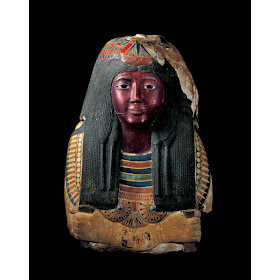
When I think of after life and the different aspects and beliefs of it from different religions or cultures, I usually think of the Egyptians' practices. Recently, I have been reading a book on religion, and came across the chapter on Egyptians. The Pharaohs of Ancient Egypt ranked themselves on a level with the gods. When the Egyptians discovered the art of mummification (preservation of the dead body), the claims of invincibly by the Pharaohs appeared to be proved. So it was only fitting that in death they were treated royally as they had been in life. All that was needed was a palace for the immortal king, which is why they built extravagant tombs.

On the trip to SLAM we saw the coffins of mummified corpses. The art that adorned these beautiful coffins was breathtaking. The hieroglyphics, being art themselves, tell the stories of the life of the one who is dead. They were put in tombs surrounded by their worldly possessions. Golds and bright colors all over tell the story of the life in the after life.

Even their pets were put in their tombs with them. Cats were so revered in Ancient Egypt that they were mummified in the manner of kings. In the end of it all, Egyptians were ready with all their possessions and riches to travel with them to after life.
Information from:
The History of Religion by Karen Farrington
Images from:
www.slam.org




















